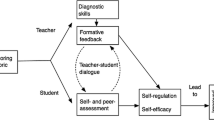Abstract
Problem solving has been a main focus in mathematics education for several decades, yet it seems that its definition and classroom implementation are far from being consensual. We explore the views and approaches of a small community: the project leaders of five elementary mathematics curriculum development projects in Israel, working within a centralized system, which dictates the syllabus. We describe and analyze their views along six categories: What are problems? What are not problems? Classification of problems, problem solving and individual differences, the ratio of problem solving tasks to other tasks in the project, and the role of heuristics and metacognition in teaching problem solving. We describe, exemplify, interpret and discuss the (few) points of convergence and the many different approaches. Finally, we reflect on the possible role of research in settling those differences. We speculate that our analysis and results go beyond the local and the idiosyncratic.

Similar content being viewed by others
Notes
A search in the Educational Resources Information Center (ERIC) database for publications bearing the keywords ‘problem-solving’ and ‘mathematics’ in their titles yielded more than 500 publications worldwide between 1993 and 2007.
There are several definitions of the terms “curriculum” and “syllabus” (see, for example, Connelly & Lantz (1991) and Eash (1991). For us, curriculum is a conglomerate of materials designed to teach and learn mathematics. These materials share an implicit or explicit rationale on goals, nature of teaching and learning and mathematical activity. Syllabus is a list of the topics to be taught and the recommended number of hours for teaching each topic.
Devoting special booklets to ‘word problems’ may send the unintended message that problem solving is a topic in itself rather than an approach to the learning and teaching of mathematics.
In the textbook, this problem appeared under the heading “Comparison Problems”.
This problem is given to students before learning about the unfolding of a pyramid.
It is interesting to note that, the project leader who presented this problem reported that most students draw quadrilaterals with two equal opposite sides, and only a few construct quadrilaterals with two equal adjacent sides.
References
Arcavi, A., Kessel, C., Meira, L., & Smith, J. (1998). Teaching mathematical problem solving: An analysis of an emergent classroom community. Research in Collegiate Mathematics Education, III, 7, 1–70.
Arcavi, A., Friedlander, A., Fresko, B., & Carmeli, M. (2006). Evaluation of six mathematics curriculum projects for first and second grade classes. Report (in Hebrew) submitted to the Chief Scientist of the Ministry of Education. Rehovot: The Weizmann Institute of Science.
Charles R. I., & Silver E. A. (1989). The teaching and assessing of Mathematical problem solving. Reston: The National Council of Teachers of Mathematics and Lawrence Erlbaum Associates.
Conelly, F. M., & Lantz O. C. (1991). Definitions of curriculum: An introduction. In A. Lewy (Ed.), The International Encyclopedia of Curriculum (pp. 15–30). New York: Pergamon Press.
National Council of Teachers of Mathematics (1980). An agenda for action. Reston: NCTM.
Cockroft W. H. (1982). Mathematics Counts. London: HMSO.
Eash Maurice J. (1991). Syllabus. In A. Lewy (Ed.), The International Encyclopedia of Curriculum (pp. 71–74). New York: Pergamon Press.
Kilpatrick, J. (1985). A retrospective account of the past 25 years of research on teaching mathematical problem solving. In E. Silver (Ed.), Teaching and learning mathematical problem solving: Multiple research perspectives (pp. 1–15). Hillsdale: Lawrence Erlbaum Associates.
Polya, G. (1945). How to solve it. Princeton: Princeton University Press.
Sierpinska A., & Kilpatrick J. (Eds.) (1997). Mathematics education as a research domain: A search for identity. Dordrecht: Kluwer.
Schoenfeld, A. H. (1985). Mathematical problem solving. New York: Academic.
Schoenfeld, A. H. (1992). Learning to think mathematically: Problem solving, metacognition and sense making in mathematics. In D. A. Grouws (Ed.) Handbook of research on mathematics teaching and learning (pp. 334–370). New York: MacMillan Publishing Company.
Silver E. (Ed.) (1985). Teaching and learning mathematical problem solving: Multiple research perspectives. Hillsdale: Lawrence Erlbaum Associates.
Stanic G. M. A., & Kilpatrick, J. (1989). Historical perspectives on problem solving in the mathematics curriculum. In R. I. Charles, & E. A. Silver (Eds.), The teaching and assessing of mathematical problem solving (pp. 1–22). Reston: The National Council of Teachers of Mathematics and Lawrence Erlbaum Associates.
Yeap, B., Ferrucci, B. J., & Carter, J. A. (2006). Comparative study of arithmetic problems in Singaporean and American mathematics textbook. In F. K. S. Leung, Graf, K. D., & Lopez-Real F. J. (Eds.) Mathematics education in different cultural traditions—A comparative study of east Asia and the West. The 13th ICMI Study (pp. 213–226). New York: Springer.
Author information
Authors and Affiliations
Corresponding author
Rights and permissions
About this article
Cite this article
Arcavi, A., Friedlander, A. Curriculum developers and problem solving: the case of Israeli elementary school projects. ZDM Mathematics Education 39, 355–364 (2007). https://doi.org/10.1007/s11858-007-0050-3
Accepted:
Published:
Issue Date:
DOI: https://doi.org/10.1007/s11858-007-0050-3




